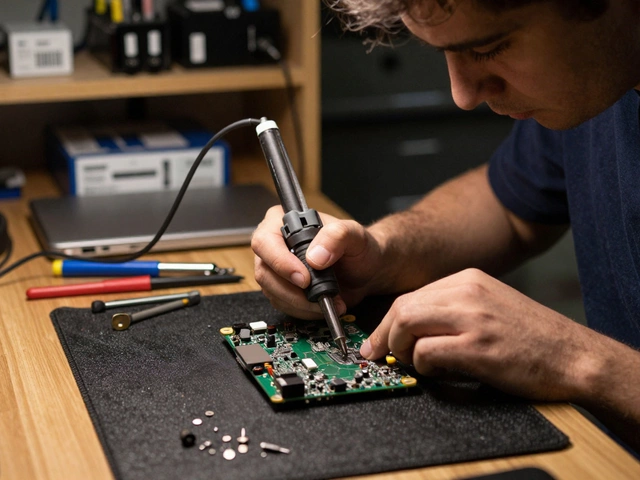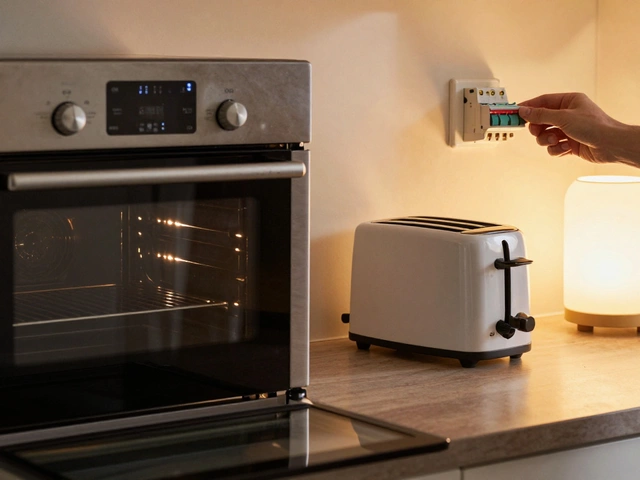How to Fix, Replace, or Install a Bathroom Fan
If you’ve ever stepped into a steamy bathroom and the fan never kicks on, you know the frustration. A good bathroom fan does three things: pulls moisture out, stops mold, and keeps the air fresh. When it stops working, you get a foggy mirror, a musty smell, and a bigger cleaning job. The good news? Most fan problems are simple enough to handle yourself, and when you need a pro, Weymouth Appliance Repair Services is just a call away.
Common Bathroom Fan Problems
1. Fan won’t turn on. The first thing to check is the switch. Flip it a few times – sometimes the contacts get stuck. If the switch works, test the fan’s power with a voltage tester. No voltage? Look at the circuit breaker; a tripped breaker is a quick fix.
2. Noise or rattling. Loose mounting screws or a dirty motor can cause a buzzing sound. Tighten the screws, clean out dust with a soft brush, and spray a little oil on the motor shaft if you feel comfortable. If the noise persists, the motor bearings might be worn out – that’s a sign it’s time for a replacement.
3. Weak airflow. Over time, the fan blades collect grime, and the vent can get blocked by insulation or dust. Turn off power, remove the cover, and clean the blades with mild detergent. Check the ductwork for kinks or crushing; a clear path lets air flow as designed.
4. Foggy mirrors even when the fan runs. The fan could be undersized for your bathroom’s size. Use the rule of thumb: 1 CFM (cubic feet per minute) per square foot of bathroom floor area, plus a bit more for showers. If your fan is too small, upgrading to a higher‑CFM model will solve the fog problem.
When to Call a Professional
DIY works for most basic issues, but there are times when you should pull the plug and call an expert. If you discover electrical wiring that looks damaged, burned, or you’re not comfortable testing voltage, stop right there – a certified electrician can handle it safely. Also, if the fan motor hums but doesn’t spin, the internal capacitor may have failed. Replacing a capacitor is a quick job for a pro, but it does involve handling live components.
Another red flag is recurring problems. If you replace a fan and it quits again within months, there could be an underlying ventilation design flaw or duct blockage that needs a thorough inspection. Professional technicians can assess the whole system, recommend the right size fan, and ensure the duct is properly sealed to maximize efficiency.
Lastly, if you’re remodeling or moving the fan location, you’ll need to re‑run ductwork and possibly obtain a building permit. That’s a job for Weymouth Appliance Repair Services – we know the local codes and have the tools to finish the job right the first time.
In a nutshell, start with the easy checks: switch, power, cleaning, and mounting. If those steps don’t bring the fan back to life, it’s time to consider motor or wiring issues and call a professional. A well‑functioning bathroom fan keeps moisture at bay, saves you on cleaning, and protects your home’s structure.
Ready to get your bathroom fan humming again? Grab a screwdriver, a flashlight, and follow the steps above. When in doubt, give Weymouth Appliance Repair Services a ring – we’ll sort out any fan problem, big or small, and get your bathroom back to fresh, dry comfort.
Who Would Replace an Extractor Fan?
- Alden Wilder
- Feb 5 2025
- 0 Comments
Replacing an extractor fan might seem daunting, but who exactly should handle this task? This article delves into the ins and outs of extractor fan replacement, offering practical tips on when you might DIY and when to call in a pro. You'll learn about the importance of proper ventilation and some surprising facts about extractor fans. By the end, you'll know precisely how to proceed if your fan goes bust. Stay informed and keep your home fresh and airy.
View More




